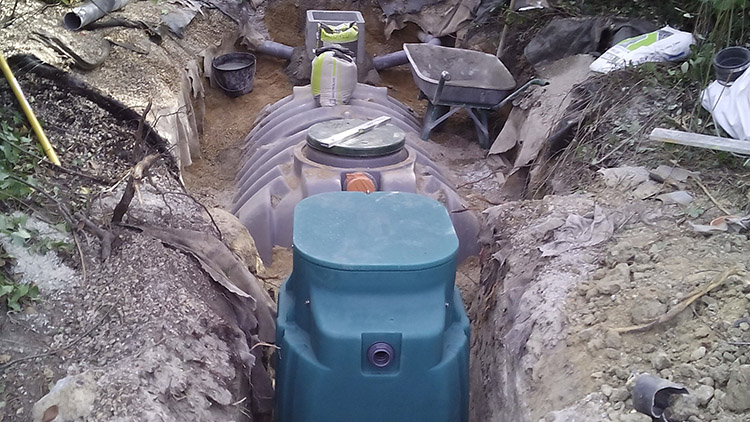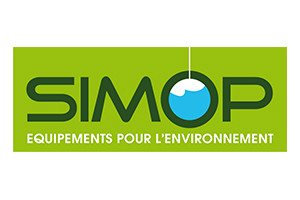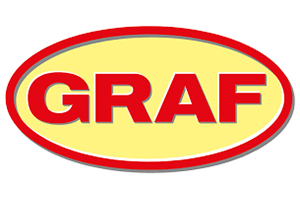- info@paca-environnement.com
- 1 rue du Gabian – Le Thalès 98000 Monaco
All water tanks

Do you have a question?

All water tanks
A septic tank (FTE) is a key element of a non-collective sanitation (ANC) system used for the primary treatment of domestic wastewater from toilets, bathrooms, kitchens, and other sanitary installations of a house or building which are not connected to a public sewer system.
This particular septic tank is designed to receive and pre-treat all raw sewage before the effluent is routed to a further treatment stage or dispersal device into the ground.
Here is how a septic tank generally works:
1. Wastewater collection:
Wastewater from various sources in the house is collected in the septic tank via the internal sewerage network.
2. Material separation:
Inside the FTE, solid materials heavier than water, such as solid particles and greases, separate from the wastewater. Lighter solids generally float to the surface, forming what is called the crust, while heavier solids settle to the bottom of the pit. Partially clarified water is found between these two layers.
3. Initial treatment:
While the solids slowly decompose in the septic tank, part of the liquid effluent is purified through natural bacterial action. However, this treatment is primarily a process of separation and physical degradation, rather than complete removal of contaminants.
4. Discharge of treated water:
After pretreatment in the FTE, the clarified effluent is discharged from the system. It may be routed to an additional treatment system, such as a sand filter, infiltration bed, or leaching field, where it will undergo further biological treatment in the soil before being discharged secure in the environment.
It is important to note that FTE constitutes only a preliminary stage of the non-collective sanitation process. The pretreated water will be conveyed to the ground (drain) so that it completes the wastewater treatment process. Therefore it is very likely that the location intended for this process will occasionally need to be rehabilitated.
Reducing the pollution load in an FTE, and therefore in the drain, is essential to ensure the proper functioning of the non-collective sanitation (ANC) system and minimize environmental impacts.
Here are some ways to reduce the pollution load in a septic tank and therefore extend the life of your drain:
1. Use of biodegradable products:
Avoid flushing harmful chemicals, fats, oils and other non-biodegradable substances down the drain. Use eco-friendly cleaning products and biodegradable detergents to reduce the pollution load.
2. Save water:
Reduce the amount of water used in your home by installing low-flow plumbing fixtures, repairing leaks and adopting water conservation practices. Reduced water use helps dilute the pollution load in the septic tank.
3. Regular maintenance:
Perform regular maintenance on your plumbing system to prevent leaks and accidental overloading of the septic tank. Make sure all internal pipes are in good working order.
4. Avoid harmful chemicals:
Avoid pouring harmful chemicals such as solvents, paints, expired medications or any other potentially toxic products down the drain. These substances can disrupt the biological balance in ETS.
5. Avoid overcrowding:
Limit the number of people living in the house or using the facilities to avoid excessive overcrowding of the FTE. A pit sized correctly for the expected load will work more efficiently.
6. Periodic draining:
Schedule periodic drains of the FTE by approved professionals. The frequency depends on the size of the pit and the pollution load, but it can vary from every one to five years in general.
7. Proper disposal of solid waste:
Avoid throwing solid objects, such as wipes, diapers or sanitary napkins, down the toilet or drain. These elements can clog the system and increase the pollution load.
8. Avoid overdosing on biological products:
If you use biological activators to promote the decomposition of organic matter in the septic tank, follow the manufacturer’s recommendations to avoid overdosing.
By following these practices, you can help keep the pollution load in your septic tank at a manageable level, which will help extend the life of the system and reduce environmental impact. Also be sure to follow local regulations and cooperate with local health authorities to ensure your non-communal sanitation system is functioning properly.








